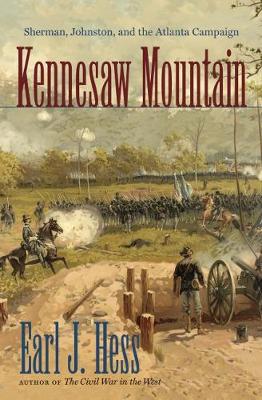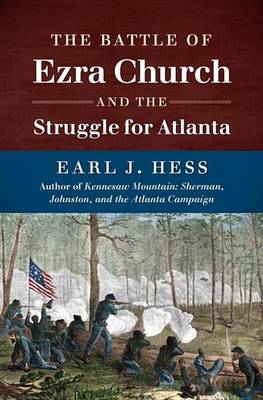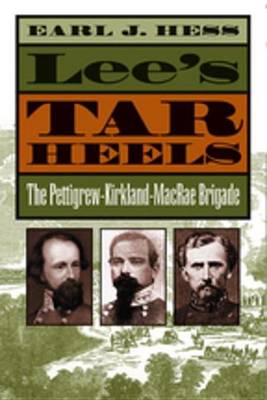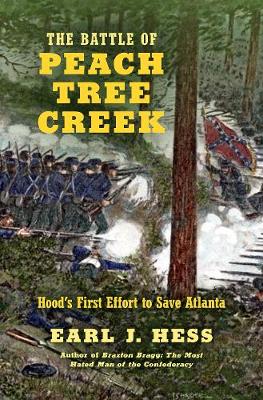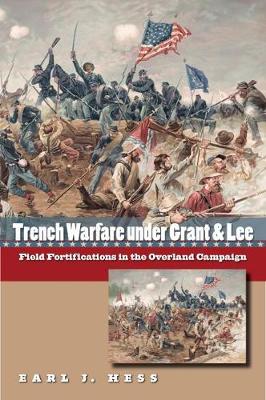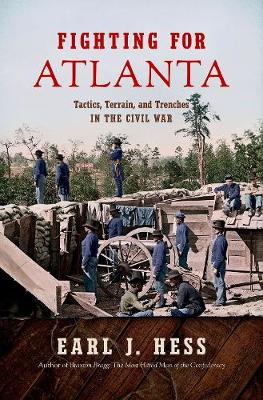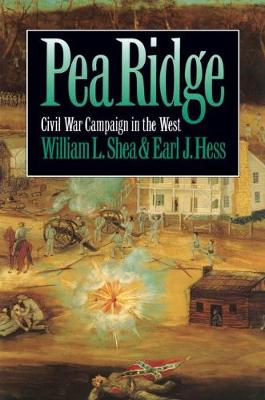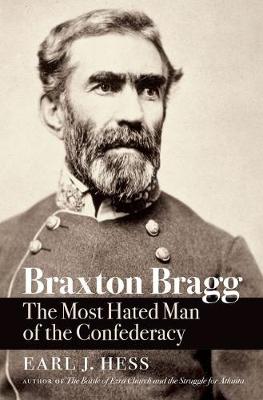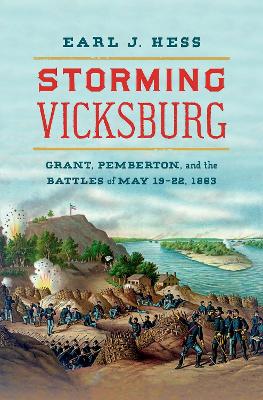Civil War America
12 total works
Hess's compelling study is the first book-length account of the fighting at Ezra Church. Detailing Lee's tactical missteps and Howard's vigilant leadership, he challenges many common misconceptions about the battle. Richly narrated and drawn from an array of unpublished manuscripts and firsthand accounts, Hess's work sheds new light on the complexities and significance of this important engagement, both on and off the battlefield.
Offering new and definitive interpretations of the battle's place within the Atlanta campaign, Earl J. Hess describes how several Confederate regiments and brigades made a pretense of advancing but then stopped partway to the objective and took cover for the rest of the afternoon on July 20. Hess shows that morale played an unusually important role in determining the outcome at Peach Tree Creek - a soured mood among the Confederates and overwhelming confidence among the Federals spelled disaster for one side and victory for the other.
Leading military historian Earl J. Hess examines how commanders adapted their operations to the physical environment, how the environment in turn affected their movements, and how Civil War armies altered the terrain through the science of field fortification. He also illuminates the impact of fighting and living in ditches for four months on the everyday lives of both Union and Confederate soldiers. The Atlanta campaign represents one of the best examples of a prolonged Union invasion deep into southern territory, and, as Hess reveals, it marked another important transition in the conduct of war from open field battles to fighting from improvised field fortifications.
A model campaign history that merits recognition as a major contribution to the literature on Civil War military operations.--Journal of Military History
Shines welcome light on the war's largest battle west of the Mississippi.--USA Today
With its exhaustive research and lively prose style, this military study is virtually a model work of its kind.--Publishers Weekly
A thoroughly researched and well-told account of an important but often neglected Civil War encounter.--Kirkus Reviews
Offers the rich tactical detail, maps, and order of battle that military scholars love but retains a very readable style combined with liberal use of recollections of the troops and leaders involved.--Library Journal
This book is assured of a place among the best of all studies that have been published on Civil War campaigns.--American Historical Review
Destined to become a Civil War classic and a model for writing military history.--Civil War History
A campaign study of a caliber that all should strive for and few will equal.--Journal of American History
An excellent and detailed book in all accounts, scholarly and readable, with both clear writing and excellent analysis. . . . Utterly essential . . . for any serious student of the Civil War.--Civil War News
While Hess analyzes Bragg's many campaigns and battles, he also emphasizeshow his contemporaries viewed his successes and failures and howthese reactions affected Bragg both personally and professionally. The testimonyand opinions of other members of the Confederate army-includingBragg's superiors, his fellow generals, and his subordinates-reveal howthe general became a symbol for the larger military failures that undid theConfederacy. By connecting the general's personal life to his military career,Hess positions Bragg as a figure saddled with unwarranted infamy andhumanizes him as a flawed yet misunderstood figure in Civil War history.
In Storming Vicksburg, military historian Earl J. Hess reveals how a combination of rugged terrain, poor coordination, and low battlefield morale among Union troops influenced the result of the largest attack mounted by Grant's Army of the Tennessee. Using definitive research in unpublished personal accounts and other underutilized archives, Hess makes clear that events of May 19 - 22 were crucial to the Vicksburg campaign's outcome and shed important light on Grant's generalship, Confederate defensive strategy, and the experience of common soldiers as an influence on battlefield outcomes.

